Work-Style Reforms and Work-Life Balance
Promotion of work-life balance
In terms of work-life balance, MGC endeavors to create systems, environments, and a culture in which each employee can feel secure and motivated by their work, taking an active role over the long term in ways befitting their individual circumstances.
The reinstatement rate after childcare leave in FY2023 was 100%. With regard to childcare support, we have established support systems that exceed legal requirements, such as childcare leave until the child is up to two years and one month old and shorter working hours for childcare until the child enters the third grade of elementary school, as well as an early return to work support system for employees who wish to return to work earlier after childcare leave.

In response to the diversification of working and vacation styles, in terms of systems, we have a flextime system with no core time, an accumulated annual leave system (up to 40 days), various special leaves (marriage, childbirth, transfer, volunteer, donor, etc.), and a teleworking system (up to 3 days per week). In terms of the corporate culture, we are working to establish no-overtime days and encourage employees to take annual paid leave through the Shorter Hours Committee established by labor and management and other means.
As a result of these efforts, the annual paid leave utilization rate for FY2023 was 89.6% (85.4% in FY2022). The total hours worked per employee was 1857.6 (average for non-managerial employees).
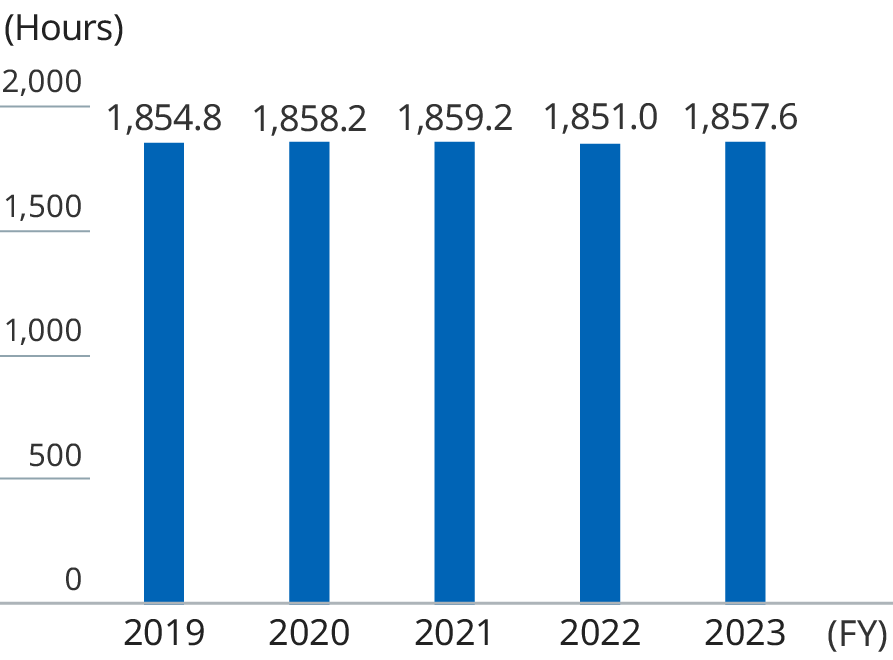
* Average for non-managerial employees
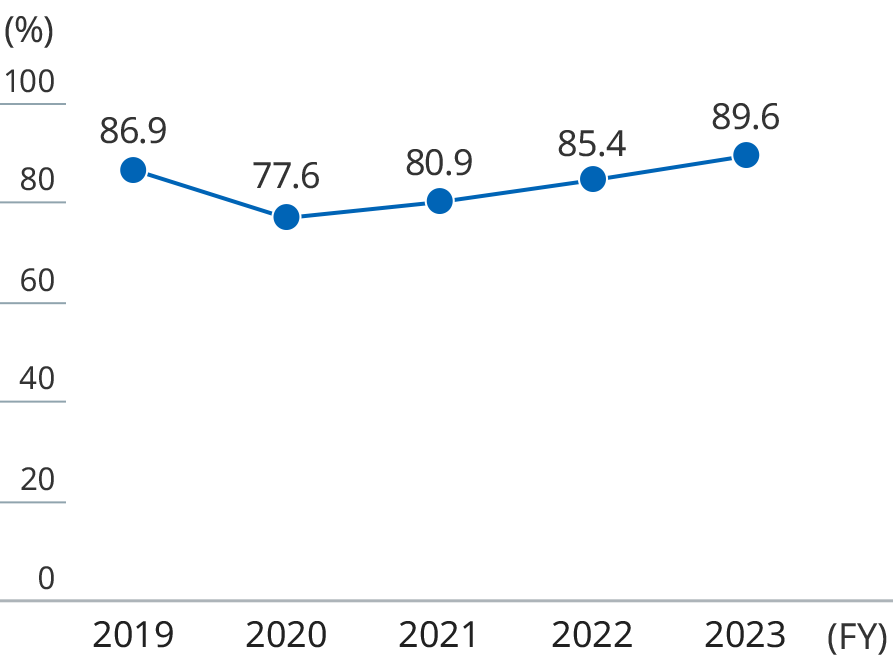
* Including managers. Average acquisition results ÷ number of days granted in the attendance data for the month of May
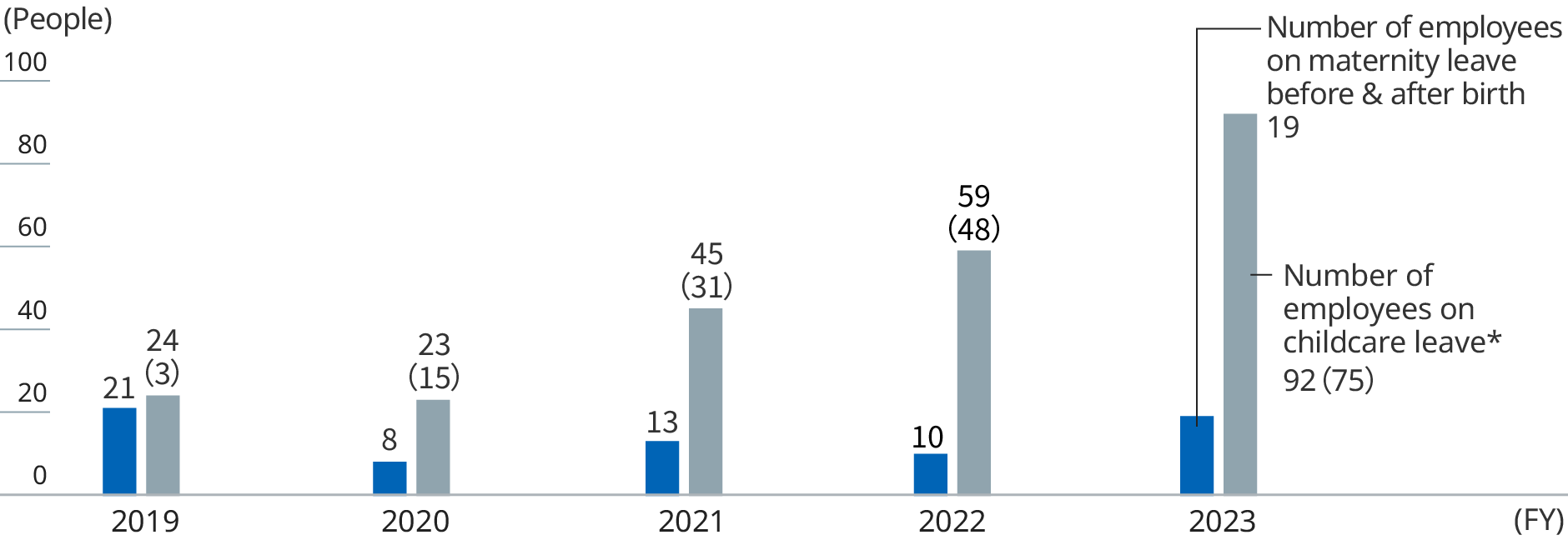
- * Parenthesis indicates the number of males who took childcare leave
- * For women, the fiscal year of child care leave is determined by the first day of maternity leave.
- * The fiscal year in which employees took childcare leave is determined by the starting day of the leave.
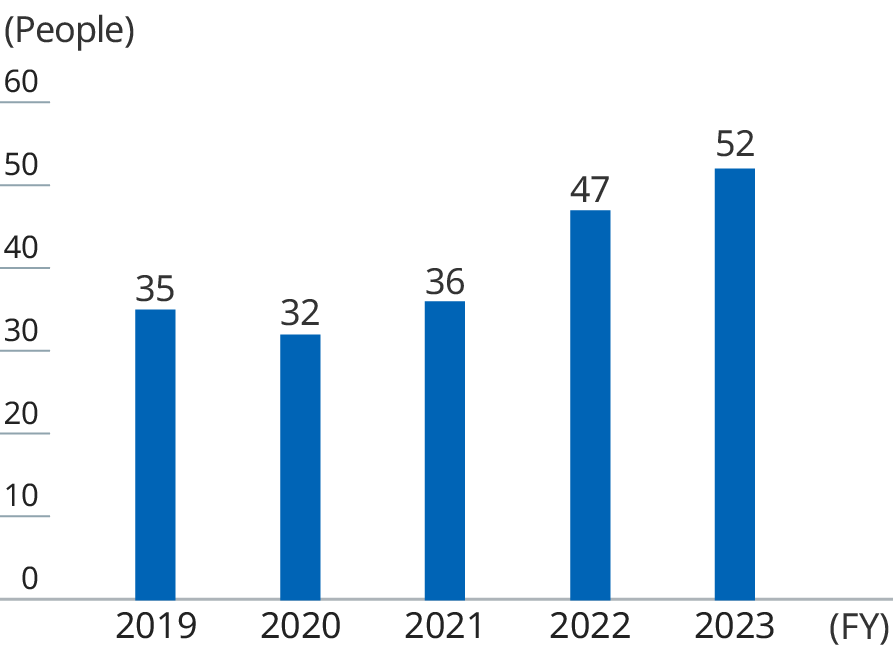
* Number of users during the FY
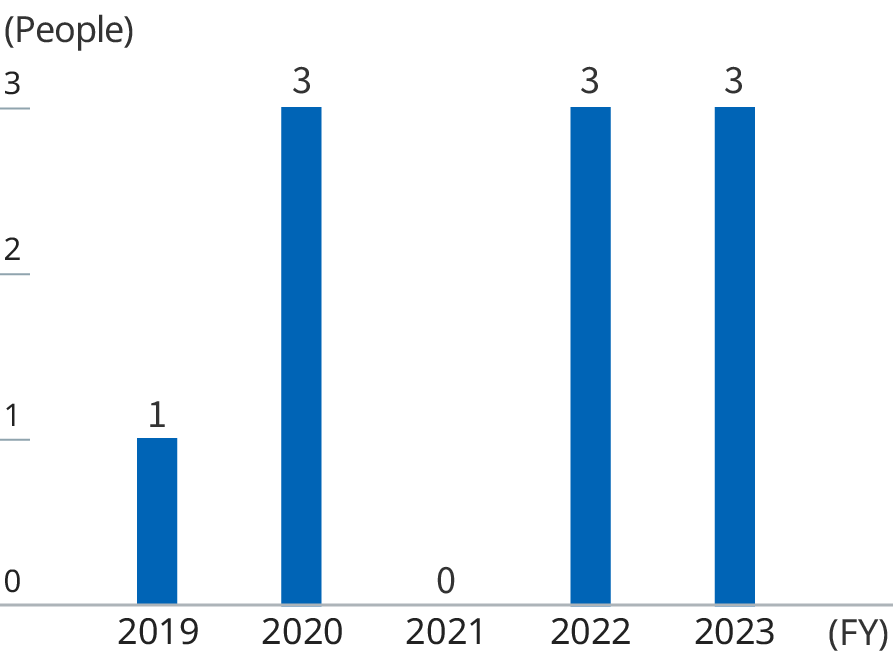
Work-Life Balance
| Purpose of Program | Program | Description |
|---|---|---|
| Systems that enable diverse methods of use of work hours | Flextime | Company-wide super flextime with no core time introduced (limited to daytime workers) |
| Teleworking | Introduced company-wide teleworking up to three days per week permitted | |
| Shortened work schedule for caregivers | Employees with young children (up to third grade) or other family members requiring care can work a shortened schedule (available in 30-minute increments, up to six hours of prescribed working hours per day) | |
| Systems that enable diverse ways of taking time off | Annual paid leave by half-day | Employees can take a half-day leave up to 30 times per year |
| Accumulating annual leave | Employees can accumulate up to 40 days of unused annual paid leave and take it for personal injury, family illness, disaster, infertility treatment, and physical checkups | |
| Volunteering leave | Employees who volunteer to assist with emergency disaster relief can take up to three (paid) days per year to do so | |
| Medical donor leave | Employees can take up to three (paid) days per year for bone marrow donation, including registration, screening and extraction | |
| Nursing leave for children | Employees can take up to 20 personal days per year to care for children up to the sixth grade of elementary school | |
| Nursing leave | Employees can take up to five days of family care leave annually for one family member requiring care and up to 10 days in the case of multiple family members requiring care | |
| Refresh leave | Employees who have reached 50 years of age are granted five days of special paid leave and an incentive | |
| Systems that enable employees to take time off with reassurance at times of life events | Parental leave | Employees unable to secure child care can take leave until child is two years old |
| Paternity leave | Employees can take five days of (paid) leave when spouse gives birth | |
| Nursing leave | Employees can take one year of leave per family member requiring care; the year can be divided into up to three intervals | |
| Leave for accompanying spouse overseas | Employees can take a leave of absence for up to three years to accompany their spouse working overseas |
Employee Awareness Survey / Employee Satisfaction Survey
In order to promote the creation of a more comfortable and challenging workplace, in 2021, we conducted an employee awareness survey to investigate employees thoughts and feelings about "Employee job satisfaction," "workplace / work situation," "satisfaction with working at our company," etc. As a result of the survey, we found that many employees find fulfillment in their work and are satisfied with working at our company.
Based on the survey results, we are conducting analyses of the current status of employees and the workplace, discussing more desirable formats, and working to apply these to effective initiatives. In addition, we will conduct periodic surveys and utilize them in measures for further enhancing the fulfillment and satisfaction of employees in the future.

Note: All employees except those on loan (non-consolidated) (response rate of 71.9%)
Work Style Reforms
MGC is promoting work style reforms as an initiative essential for improving employee's job satisfaction and productivity, and the creation of innovation.
Until now, we have implemented initiatives such as the reduction of working hours by reviewing workflow and shortening meeting times, and the creation of environments where employees can choose their work hours and sites in order to enable work styles that do not rely on long work hours and diverse and flexible work styles.
In fiscal 2020, we started trial operation for the introduction of a teleworking system, and following a detailed examination of telework implementation conditions and issues, we introduced this program in October 2023. At the same time, we are promoting the improvement of efficiency as well as the digitalization and systemization of operations, and have confirmed the effect of reducing working hours and level of establishment of measures. In light of this, we have been engaged in the reduction of total labor time and the improvement of productivity.
Also, in terms of work-life balance, MGC endeavors to create an environment in which each employee can feel secure and motivated by their work, taking an active role over the long term in ways befitting their individual circumstances. We have set "0% of employees taking less than 10 days of annual paid leave" as a KPI, and as a result of fostering employee awareness and improving the workplace environment, we achieved this goal of 0% in FY2023.
